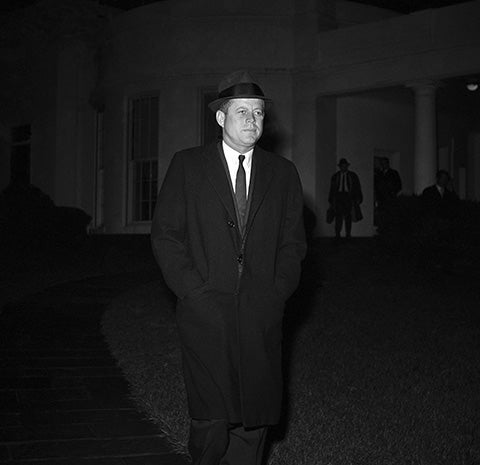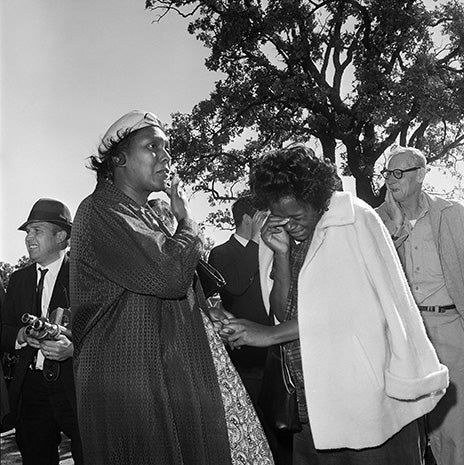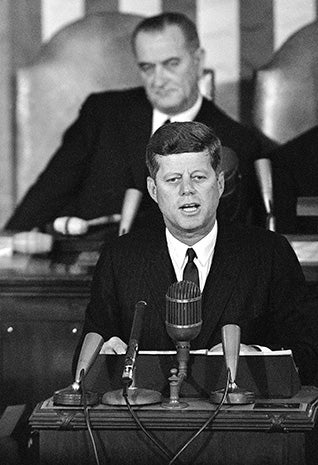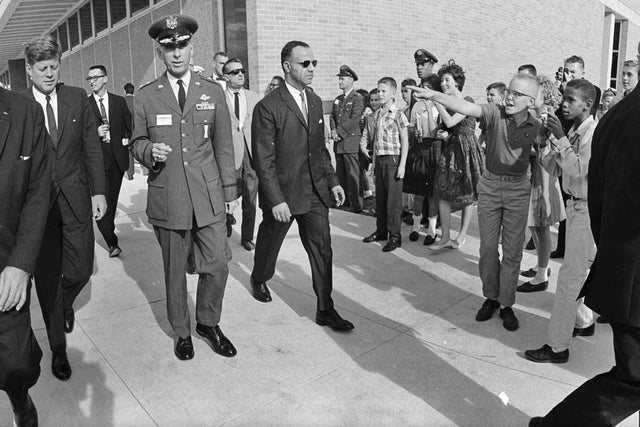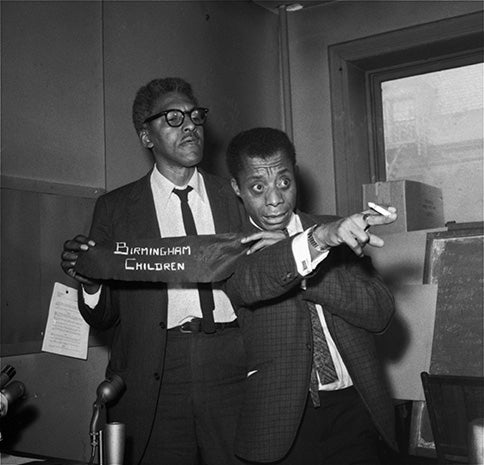JFK and the Civil Rights Movement
President John F. Kennedy leaves the White House in Washington to Andrews Air Force Base, Dec. 19, 1961.
Kennedy's civil rights legacy has undergone substantial reassessment since his 1963 assassination. Half a century later, "We're still trying to figure it out," says one longtime civil rights activist.
CBSNews.com: Complete coverage of JFK assassination 50 years later
Mourning JFK
Women burst into tears outside Parkland Hospital upon hearing that President John F. Kennedy died from a shooting while riding in a motorcade in Dallas, Nov. 22, 1963.
Looking at why so many black people revered him then - and why younger generations have largely forgotten his civil rights work now - shows that even 50 years later, Kennedy holds a complicated but pivotal place in black history.
JFK
President John F. Kennedy speaks in the House Chamber on Capitol Hill in Washington during his State of the Union report to a joint session of Congress with Vice President Lyndon Johnson sitting behind him, Jan. 14, 1963.
Kennedy's successor, President Johnson, receives credit for hammering through the monumental Civil Rights Act and Voting Rights Act, which ensured full citizenship for African-Americans.
Thurgood Marshall
Thurgood Marshall appears before a Senate Judiciary Subcommittee in Washington for a third hearing on his nomination as a judge of the U.S. Second Circuit Court of Appeals. Marshall, a former NAACP lawyer, was appointed to the bench by President John F. Kennedy in October 1961. He became Solicitor General in 1965 and the first African-American Supreme Court judge in 1967, both under the Lyndon B. Johnson administration, Aug. 8, 1962.
JFK
President John F. Kennedy walks past young bystanders during his visit to San Antonio, Nov. 21, 1963.
"Our goal must be an educational system in the spirit of the declaration of independence - a system in which all are created equal," Kennedy said in a graduation speech at San Diego State College on June 11, 1963.
"A system in which every child, whether born a banker's son in a Long Island mansion, or a Negro sharecropper's son in an Alabama cotton field, has every opportunity for an education that his abilities and character deserve."
JFK
President Kennedy stands with a group of leaders of the March on Washington at the White House, Aug. 28, 1963.
Immediately after the march, they discussed civil rights legislation that was finally inching through Congress.
The leaders pressed Kennedy to strengthen the legislation; the president listed many obstacles. Some believe Kennedy preferred to wait until after the 1964 election to push the issue. Yet in his public speeches, he spoke more and more about justice for all.
James Baldwin and Bayard Rustin
Author James Baldwin, right, and Bayard Rustin, deputy director of the March on Washington, discuss civil rights incidents in Alabama during a news conference in New York, Sept. 18, 1963.
The two civil rights leaders called upon President John F. Kennedy to use troops to "break the hold" of Gov. George Wallace, otherwise "there will be rioting in Alabama" which will affect the entire nation.
The arm band displayed was to be worn at a rally scheduled in New York on Sept. 22, 1963 "to protest the brutal murder of Negro children in Birmingham."
